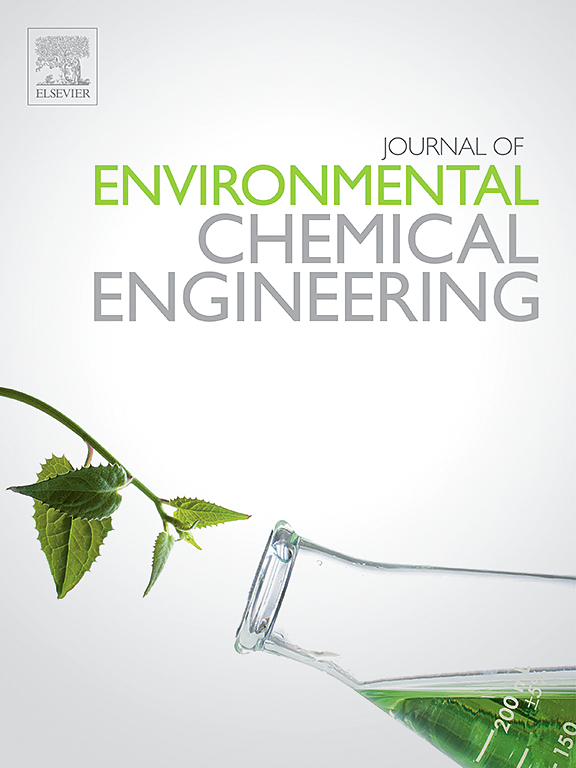Trace contaminants in biogas: Biomass sources, variability and implications for technology applications
IF 7.4
2区 工程技术
Q1 ENGINEERING, CHEMICAL
引用次数: 0
Abstract
Biogas represents a renewable and controllable energy source. Although predominantly composed of methane and carbon dioxide, it also contains various trace contaminants that can be detrimental to the technologies used for its conversion.
The aim of this work is to comprehensively explore trace contaminants in biogas. The assessment employs a two-level approach: an extensive literature review on biogas trace contaminants, complemented with on-site analyses from real-scale biogas plants to enhance and validate the literature findings. The biogas contaminants – sulphur compounds, siloxanes, halocarbons and aromatic compounds – are quantified and categorised into four distinct groups: landfill gas, agricultural gas, gas derived from the organic fraction of municipal solid waste (OFMSW), and gas from wastewater (WWTP). This study also provides contaminant effects and required thresholds for different biogas conversion technologies, including internal combustion engines, upgrading to biomethane, and innovative solid oxide fuel cells (SOFCs).
The two-level analysis reveals significant variability in contaminant levels across different biogas sources, with H2S being the most prevalent contaminant, averaging between 181 (WWTP) and 901 ppm (landfill gas). Other sulphur compounds show the highest average concentration in biogas from OFMSW (98 ppm), followed by agricultural and landfill gases. Siloxanes are typically more abundant in biogas from WWTP (2.55 ppm), while landfill gas exhibits the highest average concentrations of halocarbons and aromatic compounds (6 ppm and 109 ppm, respectively). Moreover, this study highlights the need for in-depth measurements of contaminants for highly sensitive technologies, such as SOFCs, to properly design tailored contaminant removal solutions.
沼气中的痕量污染物:生物质来源、可变性及对技术应用的影响
沼气是一种可再生、可控制的能源。虽然沼气主要由甲烷和二氧化碳组成,但它也含有各种痕量污染物,这些污染物可能会对用于转化沼气的技术造成损害。评估采用了两个层面的方法:对沼气痕量污染物进行广泛的文献综述,并辅以实际规模沼气厂的现场分析,以加强和验证文献结论。对沼气污染物--硫化合物、硅氧烷、卤化碳和芳香族化合物--进行了量化,并将其分为四个不同的类别:垃圾填埋气、农业气、城市固体废弃物有机部分产生的气体 (OFMSW) 和废水产生的气体 (WWTP)。这项研究还提供了不同沼气转化技术的污染物影响和所需阈值,包括内燃机、升级为生物甲烷和创新型固体氧化物燃料电池 (SOFC)。两级分析显示,不同沼气来源的污染物水平存在显著差异,其中 H2S 是最常见的污染物,平均值介于 181 ppm(污水处理厂)和 901 ppm(垃圾填埋气)之间。其他硫化合物在 OFMSW 沼气中的平均浓度最高(98 ppm),其次是农业沼气和垃圾填埋气。硅氧烷通常在污水处理厂产生的沼气中含量较高(2.55 ppm),而垃圾填埋气中卤烃和芳香族化合物的平均浓度最高(分别为 6 ppm 和 109 ppm)。此外,本研究还强调了对 SOFC 等高敏感技术进行污染物深度测量的必要性,以便正确设计量身定制的污染物去除解决方案。
本文章由计算机程序翻译,如有差异,请以英文原文为准。
求助全文
约1分钟内获得全文
求助全文
来源期刊

Journal of Environmental Chemical Engineering
Environmental Science-Pollution
CiteScore
11.40
自引率
6.50%
发文量
2017
审稿时长
27 days
期刊介绍:
The Journal of Environmental Chemical Engineering (JECE) serves as a platform for the dissemination of original and innovative research focusing on the advancement of environmentally-friendly, sustainable technologies. JECE emphasizes the transition towards a carbon-neutral circular economy and a self-sufficient bio-based economy. Topics covered include soil, water, wastewater, and air decontamination; pollution monitoring, prevention, and control; advanced analytics, sensors, impact and risk assessment methodologies in environmental chemical engineering; resource recovery (water, nutrients, materials, energy); industrial ecology; valorization of waste streams; waste management (including e-waste); climate-water-energy-food nexus; novel materials for environmental, chemical, and energy applications; sustainability and environmental safety; water digitalization, water data science, and machine learning; process integration and intensification; recent developments in green chemistry for synthesis, catalysis, and energy; and original research on contaminants of emerging concern, persistent chemicals, and priority substances, including microplastics, nanoplastics, nanomaterials, micropollutants, antimicrobial resistance genes, and emerging pathogens (viruses, bacteria, parasites) of environmental significance.
 求助内容:
求助内容: 应助结果提醒方式:
应助结果提醒方式:


